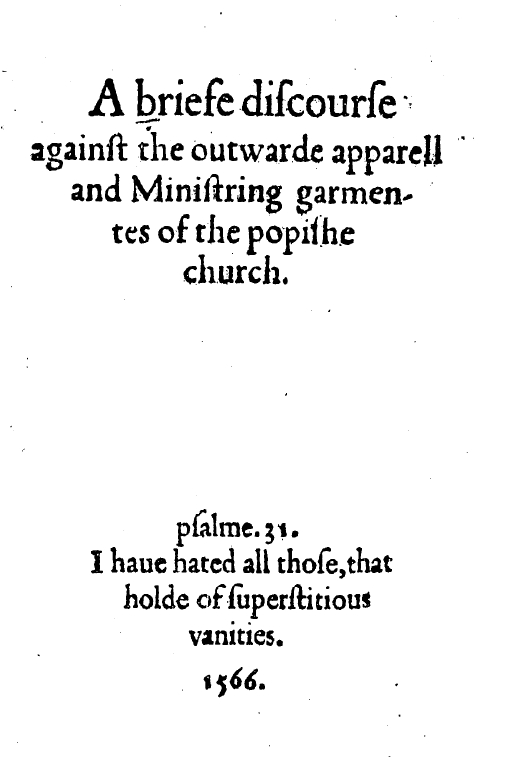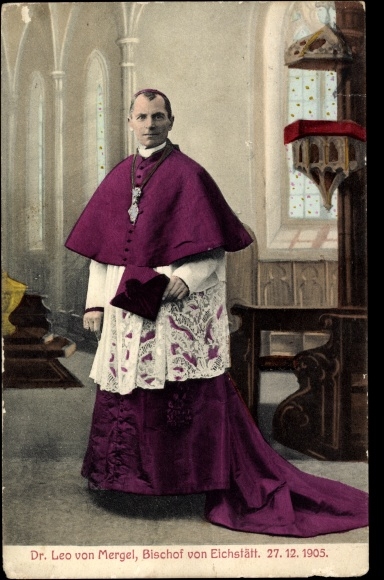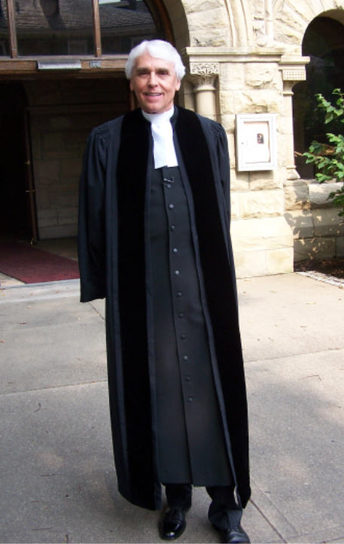|
Vestments
Vestments are liturgical garments and articles associated primarily with the Christian religion, especially by Eastern Churches, Catholics (of all rites), Anglicans, and Lutherans. Many other groups also make use of liturgical garments; this was a point of controversy in the Protestant Reformation and sometimes since, in particular during the ritualist controversies in England in the 19th century. Origins of vestments In the early Christian churches, officers and leaders, like their congregations, wore the normal dress of civil life in the Greco-Roman world, although with an expectation that the clothing should be clean and pure during holy observances. From the 4th century onward, however, modifications began to be made to the form of the garments, and as secular fashions changed from the 6th century the church retained the original forms of their garments, although with separate development and with regional variations. Having separate, consecrated clothing for the c ... [...More Info...] [...Related Items...] OR: [Wikipedia] [Google] [Baidu] |
Vestments Controversy
The vestments controversy or vestarian controversy arose in the English Reformation, ostensibly concerning vestments or clerical dress. Initiated by John Hooper's rejection of clerical vestments in the Church of England under Edward VI as described by the 1549 ''Book of Common Prayer'' and 1550 ordinal, it was later revived under Elizabeth I. It revealed concerns within the Church of England over ecclesiastical identity, doctrine and church practices. Formulations The vestments controversy is also known as the ''vestiarian crisis'' or, especially in its Elizabethan manifestation, the ''edification crisis''. The latter term arose from the debate over whether or not vestments, if they are deemed a "thing indifferent" (''adiaphoron''), should be tolerated if they are "edifying"—that is, beneficial. Their indifference and beneficial status were key points of disagreement. The term ''edification'' comes from 1 Corinthians 14:26, which reads in the 1535 Coverdale Bible: ... [...More Info...] [...Related Items...] OR: [Wikipedia] [Google] [Baidu] |
Vestments Controversy
The vestments controversy or vestarian controversy arose in the English Reformation, ostensibly concerning vestments or clerical dress. Initiated by John Hooper's rejection of clerical vestments in the Church of England under Edward VI as described by the 1549 ''Book of Common Prayer'' and 1550 ordinal, it was later revived under Elizabeth I. It revealed concerns within the Church of England over ecclesiastical identity, doctrine and church practices. Formulations The vestments controversy is also known as the ''vestiarian crisis'' or, especially in its Elizabethan manifestation, the ''edification crisis''. The latter term arose from the debate over whether or not vestments, if they are deemed a "thing indifferent" (''adiaphoron''), should be tolerated if they are "edifying"—that is, beneficial. Their indifference and beneficial status were key points of disagreement. The term ''edification'' comes from 1 Corinthians 14:26, which reads in the 1535 Coverdale Bible: ... [...More Info...] [...Related Items...] OR: [Wikipedia] [Google] [Baidu] |
Choir Dress
Choir dress is the traditional vesture of the clerics, seminarians and religious of Christian churches worn for public prayer and the administration of the sacraments except when celebrating or concelebrating the Eucharist. It differs from the vestments worn by the celebrants of the Eucharist, being normally made of fabrics such as wool, cotton or silk, as opposed to the fine brocades used in vestments. It may also be worn by lay assistants such as acolytes and choirs. It was abandoned by most of the Protestant churches that developed from the sixteenth-century Reformation. Like Eucharistic vestments, choir dress derived originally from the formal secular dress of the Roman Empire in the first centuries of the Christian era. This survived in church usage after fashion had changed. Choir dress differs from "house dress," which is worn outside of a liturgical context (whether in the house or on the street). House dress may be either formal or informal. Roman Catholic c ... [...More Info...] [...Related Items...] OR: [Wikipedia] [Google] [Baidu] |
Cassock
The cassock or soutane is a Christian clerical clothing coat used by the clergy and male religious of the Oriental Orthodox Churches, Eastern Orthodox Church and the Catholic Church, in addition to some clergy in certain Protestant denominations such as Anglicans and Lutherans. "Ankle-length garment" is the literal meaning of the corresponding Latin term, . It is related to the habits traditionally worn by nuns, monks, and friars. The cassock derives historically from the tunic of classical antiquity that in ancient Rome was worn underneath the toga and the chiton that was worn beneath the himation in ancient Greece. In religious services, it has traditionally been worn underneath vestments, such as the alb. In the West, the cassock is little used today except for religious services, save for traditionalist and those other Catholic clergy and religious who continue to wear the cassock as their standard attire. However, in many countries it was the normal every ... [...More Info...] [...Related Items...] OR: [Wikipedia] [Google] [Baidu] |
Clerical Clothing
Clerical clothing is non- liturgical clothing worn exclusively by clergy. It is distinct from vestments in that it is not reserved specifically for use in the liturgy. Practices vary: clerical clothing is sometimes worn under vestments, and sometimes as the everyday clothing or street wear of a priest, minister, or other clergy member. In some cases, it can be similar or identical to the habit of a monk or nun. In modern times, many Christian clergy have adopted the use of a shirt with a clerical collar; but the use of clerical clothing is most commonly among Catholic, Anglican, Oriental Orthodox, and Eastern Orthodox clergy. Catholicism (Latin Rite) In 1215, the Fourth Lateran Council made it mandatory for all the Christian clergy to wear distinctive dress. Its purpose was not necessary to elevate the status of the Christian clerics; it was intended that they would catch the public eye if any member of the clergy is seen on the street. However, the rules at the time we ... [...More Info...] [...Related Items...] OR: [Wikipedia] [Google] [Baidu] |
Stole (vestment)
The stole is a liturgical vestment of various Christian denominations, which symbolizes priestly authority; in Protestant denominations which do not have priests but use stoles as a liturgical vestment, however, it symbolizes being a member of the ordained. It consists of a band of colored cloth, usually of silk, about seven and a half to nine feet long and three to four inches wide, whose ends may be straight or may broaden out in the shape of a spade or bell. The center of the stole is worn around the back of the neck and the two ends hang down parallel to each other in front, either attached to each other or hanging loose. The stole is almost always decorated in some way, usually with two crosses, or sometimes another significant religious design. It is often decorated with contrasting galloons (ornamental trim) and fringe is usually applied to the ends of the stole following . A piece of white linen or lace may be stitched onto the back of the collar as a sweat guard, wh ... [...More Info...] [...Related Items...] OR: [Wikipedia] [Google] [Baidu] |
Clerical Collar
A clerical collar, clergy collar, or, informally, dog collar, is an item of Christian clerical clothing. The clerical collar is almost always white and was originally made of cotton or linen but is now frequently made of plastic. There are various styles of clerical collar. The traditional full collar (the style informally described as a ''dog collar'') is a ring that closes at the back of the neck, presenting a seamless front. It is often attached with a ''collaret'' or ''collarino'' that covers the white collar almost completely, except for a small white rectangle at the base of the throat, and sometimes with the top edge of the collar exposed to mimic the collar of a cassock. Alternatively, it may simply be a detachable tab of white in the front of the clerical shirt. The clerical shirt is traditionally black (or another color appropriate to a person's ministry rank, such as purple for Anglican bishops), but today is available in a variety of colors depending on the wearer's ... [...More Info...] [...Related Items...] OR: [Wikipedia] [Google] [Baidu] |
Anglicans
Anglicanism is a Western Western may refer to: Places *Western, Nebraska, a village in the US *Western, New York, a town in the US *Western Creek, Tasmania, a locality in Australia *Western Junction, Tasmania, a locality in Australia *Western world, countries that id ... Christian tradition that has developed from the practices, liturgy, and identity of the Church of England following the English Reformation, in the context of the Protestant Reformation in Europe. It is one of the largest branches of Christianity, with around 110 million adherents worldwide . Adherents of Anglicanism are called ''Anglicans''; they are also called ''Episcopalians'' in some countries. The majority of Anglicans are members of national or regional Ecclesiastical province#Anglican Communion, ecclesiastical provinces of the international Anglican Communion, which forms the third-largest Christian Communion (Christian), communion in the world, after the Roman Catholic Church and the Eastern ... [...More Info...] [...Related Items...] OR: [Wikipedia] [Google] [Baidu] |
Ritualism
Ritualism, in the history of Christianity, refers to an emphasis on the rituals and liturgical ceremonies of the church. Specifically, the Christian ritual of Holy Communion. In the Anglican church in the 19th century, the role of ritual became a contentious matter. The debate over this topic was also associated with struggles between High Church and Low Church movements. Definition In Anglicanism, the term 'ritualist' is often used to describe the revival of second generation Oxford Movement/Anglo-Catholic/High Church which sought to reintroduce a range of Roman Catholic liturgical practices to the Church of England. Ritualism is also seen as a controversial term (i.e. rejected by some of those to whom it is applied). Common arguments Arguments about ritualism in the Church of England were often shaped by opposing (and often unannounced) attitudes towards the concept of ''sola scriptura'' and the nature of the authority of the Bible for Christians. For Those who suppor ... [...More Info...] [...Related Items...] OR: [Wikipedia] [Google] [Baidu] |
Geneva Gown
The Geneva Gown, also called a pulpit gown, pulpit robe, or preaching robe, is an ecclesiastical garment customarily worn by Ordained Ministers and Accredited Lay Preachers in the Christian Churches that arose out of the historic Protestant Reformation. It is particularly associated with Protestant Churches of the Reformed, Methodist, Unitarian and Free Christian traditions. Description The gown, analogous to the Western doctoral robe and similar to American judicial attire, is constructed from heavy material, most appropriately of black color, and usually features double-bell sleeves with a cuff (mimicking the cassock once worn under it) and velvet facings (or panels) running over the neck and down both sides of the front enclosure length-wise, mimicking the ecclesiastical tippet once worn over it. A minister who has earned an academic doctoral degree in any of the theological disciplines ( DD, D.Min., STD, Th.D.) or in the liberal arts and sciences (PhD, DA) may ... [...More Info...] [...Related Items...] OR: [Wikipedia] [Google] [Baidu] |
Religious Habit
A religious habit is a distinctive set of religious clothing worn by members of a religious order. Traditionally some plain garb recognizable as a religious habit has also been worn by those leading the religious eremitic and anchoritic life, although in their case without conformity to a particular uniform style. Uniformity and distinctiveness by order often evolved and changed over time. Interpretation of terms for clothes in religious rules could change over centuries. Furthermore, every time new communities gained importance in a cultural area the need for visual separation increased for new as well as old communities. Thus, modern habits are rooted in historic forms, but do not necessarily resemble them in cut, colour, material, detail or use. In Christian monastic orders of the Catholic, Lutheran and Anglican Churches, the habit often consists of a tunic covered by a scapular and cowl, with a hood for monks or friars and a veil for nuns; in apostolic orders it may b ... [...More Info...] [...Related Items...] OR: [Wikipedia] [Google] [Baidu] |
Protestant Reformation
The Reformation (alternatively named the Protestant Reformation or the European Reformation) was a major movement within Western Christianity in 16th-century Europe that posed a religious and political challenge to the Catholic Church and in particular to papal authority, arising from what were perceived to be errors, abuses, and discrepancies by the Catholic Church. The Reformation was the start of Protestantism and the split of the Western Church into Protestantism and what is now the Roman Catholic Church. It is also considered to be one of the events that signified the end of the Middle Ages and the beginning of the early modern period in Europe.Davies ''Europe'' pp. 291–293 Prior to Martin Luther, there were many earlier reform movements. Although the Reformation is usually considered to have started with the publication of the '' Ninety-five Theses'' by Martin Luther in 1517, he was not excommunicated by Pope Leo X until January 1521. The Diet of Worms of May ... [...More Info...] [...Related Items...] OR: [Wikipedia] [Google] [Baidu] |










.jpg)